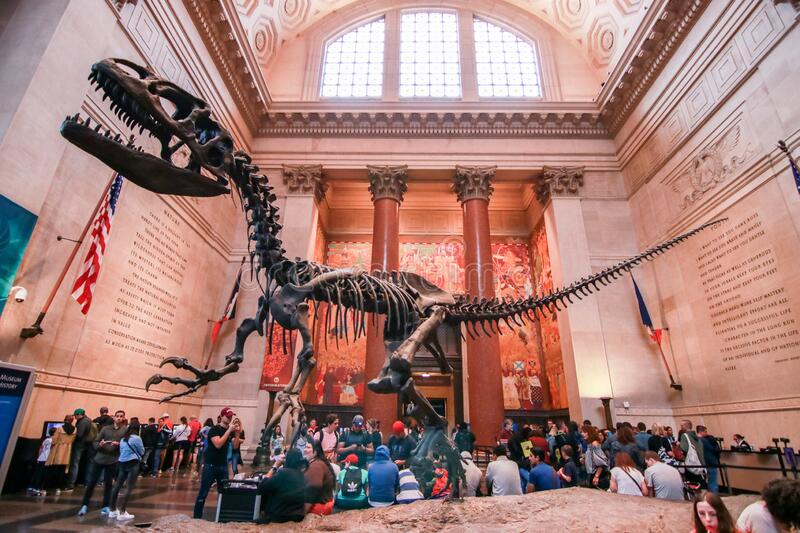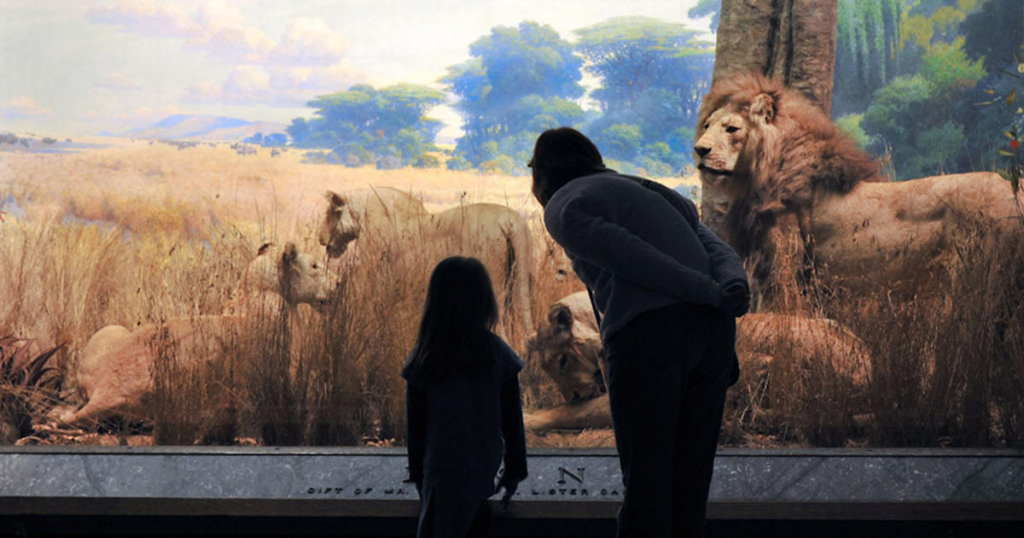
The American Museum of Natural History is a world-famous research institution and museum in New York City. It is home to millions of specimens and artifacts, including many important fossil collections and cultural artifacts. The museum has a number of permanent exhibits, as well as temporary exhibitions that change on a regular basis. Some of the popular exhibits at the museum include the Hall of Dinosaurs, the Hall of Human Origins, and the Hall of Biodiversity. The museum is a great place to learn about the natural world and the history of the Earth.
Special Exhibitions: The American Museum of Natural History has a number of special exhibitions that are on display for a limited time. These exhibitions typically focus on a specific topic or theme and may feature unique artifacts or interactive displays. Some examples of past special exhibitions at the museum include "The Horse" and "Whales: Giants of the Deep." You can check the museum's website or social media accounts to find out what special exhibitions are currently on display or coming soon. The Horse:

“The Horse” was a special exhibition at the American Museum of Natural History that explored the history and evolution of the horse. The exhibition featured a wide range of artifacts, including fossils, cultural objects, and interactive displays. It covered the evolution of the horse from its early ancestors to modern day, and also examined the relationship between humans and horses throughout history. The exhibition likely included information about how horses have been used for transportation, agriculture, warfare, and sport, as well as their role in art, literature, and mythology. It would have been a interesting and educational experience for anyone interested in horses or the natural history of mammals.
Whales.

“Whales: Giants of the Deep” was a special exhibition at the American Museum of Natural History that focused on the biology, behavior, and conservation of whales. The exhibition likely featured a variety of interactive displays and exhibits, including fossils, models, and real specimens of different species of whales. It would have covered a wide range of topics related to whales, including their anatomy, migration patterns, communication, and social behavior. The exhibition may have also addressed the threats facing whales, such as hunting, pollution, and climate change, and the efforts being made to protect these majestic creatures. It would have been a fascinating and educational experience for anyone interested in whales or marine biology.
Permanent Exhibitions.

Permanent exhibitions at a museum of natural history can vary widely depending on the specific museum and its focus, but some common themes among permanent exhibitions at natural history museums include:
Evolution and the history of life on Earth: This might include exhibits on the origins of life, the development of different species over time, and mass extinctions.
Geology and Earth sciences: Exhibits in this category might include displays on the structure and history of the Earth, as well as geological processes such as plate tectonics and mountain building.
Paleontology: This might include exhibits on the study of dinosaurs and other ancient life forms, as well as fossil specimens and displays on the processes of fossilization.
Human cultures and anthropology: Natural history museums may have exhibits on the cultures and societies of different human groups, both past and present, as well as on the development of human civilization and technology.
Biology and ecology: These exhibits might focus on the diversity of plant and animal life, as well as the relationships between different species and their environments.
Astronomy and space science: Some natural history museums may also have exhibits on the study of the universe and space exploration.
In addition to these types of exhibits, natural history museums may also have displays on a wide range of other topics, such as art, history, and cultural artifacts.
Tickets & Admission.

There are a few different options for purchasing tickets to the American Museum of Natural History in New York City. You can purchase tickets online through the museum’s website, by phone, or in person at the museum’s ticketing desk.
General admission tickets include access to all permanent exhibits and most special exhibitions. Prices for general admission tickets vary depending on the age of the visitor. Children aged 2 and under are free, children aged 3-12 are $15, and adults aged 13 and over are $23. There are also discounts available for seniors, students, and military personnel.
In addition to general admission tickets, the museum also offers combination tickets that include access to special exhibitions or other attractions in the city. There are also options for group rates for parties of 15 or more.
It’s worth noting that the museum is closed on Thanksgiving and Christmas Day.
Plan Your Visit.

Here are a few tips to help you plan your visit to the American Museum of Natural History:
Purchase tickets in advance: You can purchase tickets online or by phone to avoid waiting in line at the museum.
Plan your route: The museum is located on the Upper West Side of Manhattan and is easily accessible by public transportation. You can take the subway to the 81st Street-Museum of Natural History station on the B and C lines, or the 86th Street station on the 1, 2, and 3 lines. You can also take the bus to the museum.
Allow plenty of time: There is a lot to see and do at the museum, so it’s a good idea to plan on spending at least a few hours there. You can also consider taking a break for lunch at one of the museum’s cafes or restaurants.
Wear comfortable shoes: The museum is large and has many exhibits to explore, so you’ll want to wear comfortable shoes.
Consider a guided tour: The museum offers a variety of guided tours that focus on different themes or exhibits. A guided tour can be a great way to learn more about the museum and its collections.
I hope these tips will help you have a great visit to the American Museum of Natural History!
No Comments
Leave Comment